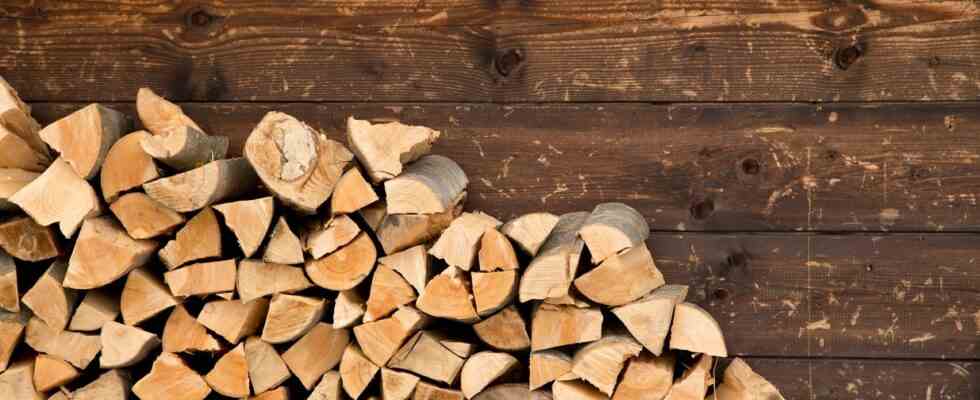Choose the storage location carefully
Where you store your firewood is important because it conditions the preservation of your fuel as well as its accessibility and your comfort.
The storage location for your wood must therefore meet certain criteria. He must, above all, To be accessible, because, in winter, it can freeze and the ground is then slippery and impassable. You must therefore choose a location that is preferably close to your house, ideally adjoining it.
The location must also be served by a path or a paved or concrete driveway, or at least that doesn’t get too muddy when it rains. By choosing a location that is close and accessible, you avoid making heating a daunting daily chore.
It is also necessary that the location protects your wood from moisture, his worst enemy. If the wood takes on water, it becomes, in effect, unusable, especially since in winter, you will have little opportunity to let it dry in the sun. However, you should not store your wood in indoor spaces such as a basement or garage. These spaces are poorly ventilated and even though they are sheltered from the weather, they usually have moisture-saturated air, which is not good for your wood or the air quality in your home. So prefer a dry and ventilated place for optimum storage of firewood.
Storing dry or green wood
If you bought logs of dry wood for this winter, you must immediately put them in a shelter, because they are afraid of moisture. But if you have bought or cut green wood that you intend to use for heating next season, you must let it dry in the summer in the open air. It is not necessary to stack the logs, on the contrary, the more they are spread out, the faster they will dry.
But if you only have a little space, you can stack them to a limited height, but not in a log shelter or in a garage or basement. It is necessary, in fact, that these logs are exposed to the sun and the wind so that they are transformed into good firewood. If it’s green wood this year, know that you won’t be able to use it for heating. only in two years.
Store firewood in a shed or log shed
It’s here optimal solution to store your wood and keep it protected from the weather throughout the year. The shed, also called a log shelter, is a structure, usually made of wood, that has a raised platform that protects the wood from runoff water. The platform is protected by a sloping roof that prevents rain from wetting the wood and snow from covering it.
If this solution is ideal, it is because it is a solid and durable structure that does not fear wind or frost. It allows the wood to be protected throughout the year, while allowing air to circulate, because these shelters are generally open on at least one side, if not all four sides. In summary, the wood shed protects the logs from humidity, runoff water and allows them to be ventilated throughout the year. This solution is therefore suitable even for those who wish to dry green wood in summer to use it for heating in winter.
Storing wood without a shelter or shed
If you don’t have a log shed or shed, you can always store your firewood outside. But you must create a suitable space for this use.
Wood must not be in direct contact with the ground so that it does not rot. You must therefore prepare a more or less flat platform by placing concrete blocks, bricks or stones. Once this improvised platform is ready, you can pile your dry wood on top. In summer, you can leave the wood bare, exposed to the sun and in the open air to dry, especially if it is green wood that you have just collected. In winter, you can protect the logs andn covering them with a plastic sheet or airtight canvas. Remember to strap the tarp so that the wind does not carry it away.
Sort and stack logs
For optimal storage, you can sort your logs according to their species, their size or their nature (green or dry wood). Doing so saves you a lot of time wasted in the winter when you need to find logs of certain sizes or species.
Stack the logs, sorting them between kindling, for kindling, medium-sized logs, for daily consumption and large-sized logs for large fires in the evening.
When you stack your firewood, always start with the largest logs which should end up at the bottom of the stack or heap. Then place the medium-sized logs to finish with the kindling. Thus, by using during the winter, you can take wood by trench, each trench containing the three types of wood that you will need for the day.

